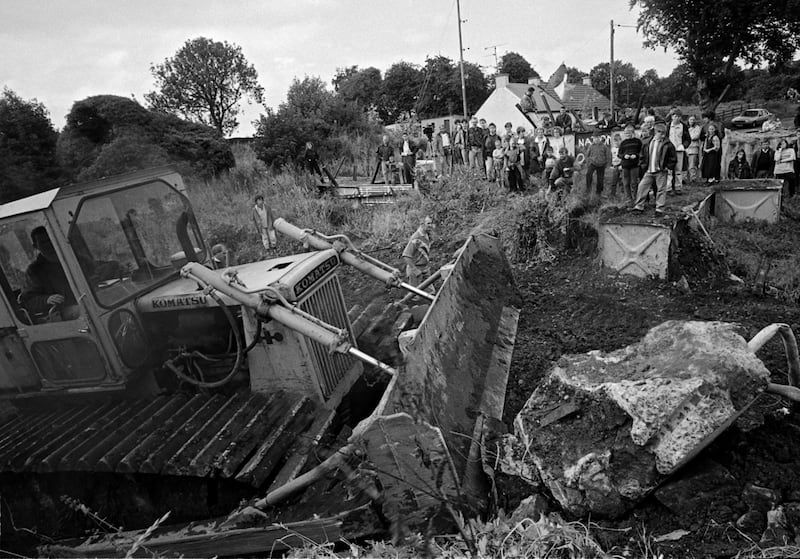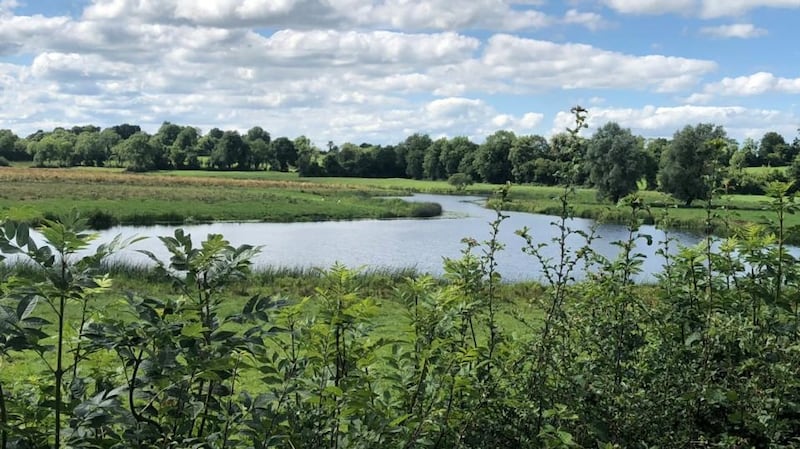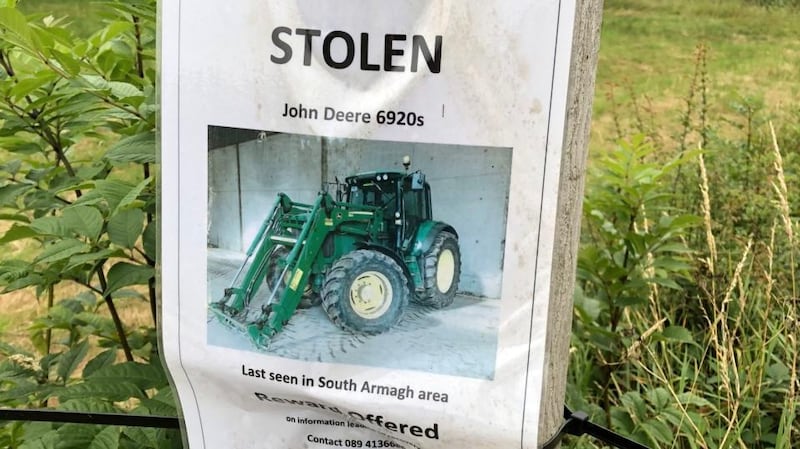There are more than twice as many border crossings in Co Monaghan alone as there are between Norway and Sweden, an international boundary much beloved of simplifying Brexiteers.
If you include unmapped routes – sometimes no more than planks across a stream – Monaghan may even give the European Union’s entire eastern frontier a run for its money.
When civil servants from Northern Ireland and the Republic finally agreed an estimate of the Border's total number of crossings earlier this summer, a century after partition, the count came to 208, or one for every 2½ kilometres.

Almost half – 95 – were between Monaghan and its three northern neighbours, Fermanagh, Tyrone and Armagh. The figure dwarfed even the 59 counted for Donegal, and made the borders of Louth (33 crossings), Cavan (15) and Leitrim (six) seem unperforated by comparison.
The Brexit-enforced task of counting them was described by officials as “almost impossible” because of confusions between public and private land, places where the Border runs up the middle of roads, and other anomalies. And there is no better place to see what the counters were up against than on the route between Cavan and Clones, where my own exploration of the Border began.
Over a distance of 12km, you cross the frontier four times. But that’s only on the main road, the N54 (as it is in the Republic) and A3 (as it becomes on its brief visits north). Turn off this on to the many side roads to your left and right and you enter a maze that must keep bureaucrats and other lovers of order awake at night.
Mysteries of partition
Not long after I met the A3 for the first time, another interesting statistic appeared beside a gateway. “Do not cross this field unless you can do it in nine seconds,” read the warning notice, “because the bull can do it in 10!” There was no sign of the bull, although inviting as the field looked, with the river Finn meandering through it, I wasn’t tempted.
A little farther on, in an unintended joke, services offered by a local business included "alignment" – the buzzword of Britain's torturous Brexit negotiations. In this case, it was only car tyres they were offering to align.
And, as a tourist on foot, my main concern with tyres was not getting run over by the traffic that hurls along here at, or over, the speed limits (80km/h in the Republic, 60mph – 96.5km/h – in the North, and both irrelevant to some drivers). Already, however, I was approaching the notorious Drummully salient, perhaps the single greatest challenge to cross-Border alignment, and happy for the excuse it gave to leave the main road.
Like the hundreds of local townlands that share the prefix, Drummully gets its name partly via the Irish droim ("ridge"), from the drumlin belt that stretches across Ireland at this latitude. The proliferation of such Drums in south Ulster suggests marching – a connection Drumcree helped perpetuate. And there has indeed been a long-established tendency to mark territory in these parts.
Just east of Drummully is a place with the even more martial name of Drumswords, where in 1828, in an incident known as “the rising of Burke”, an Orangemen of local infamy was hanged posthumously from a tree, several days after he had been buried in the local cemetery. But even allowing for the depth of political enmities around here, how Drummully ever became an international frontier is one of the deeper mysteries of partition.
Sometimes also referred to as a “polyp” by map-makers, the area is a virtual exclave of Monaghan, all but surrounded by Fermanagh. The connecting isthmus is only metres wide: that sprinting bull could probably cross it in 10 seconds too. But there is no road into Drummully at the connecting point.
Unregistered marriages
On the contrary, direct entry from the Republic is cut off by the aforementioned river Finn, which uniformed gardaí have sometimes had to wade across to avoid the complications of road-based approaches, all of which pass through the North.
Peter Leary, Fermanagh-born author of Unapproved Routes: Histories of the Irish Border 1922-1972, suggests Drummully was "almost certainly a ballybetagh": an ancient unit of territory usually comprising 16 townlands. And however it ended up in Monaghan – almost but not quite gripped by two Fermanagh claws, like one of those toys in the amusement arcade game – it was clearly never designed to withstand the stresses of international border duty.
Post-partition, farmers inside it suddenly had to cross the frontier twice en route to market in Clones, and the same on the way back. This was complicated even before the Northern authorities started cratering and "spiking" roads to block terror attacks. Meanwhile, the Church of Ireland in Drummully was now separated from its rectory by the Border, and in the confusion, for years, marriages went unregistered in Dublin.
Regardless of personal affiliations, sane people on both sides of the political divide thought that either Drummully would have to be sent north by the 1924 Boundary Commission, or that the surrounding northern bits would go south. The commission took a long look at the area. Then events intervened, and the entire Border stayed where it was.

So today, although the drumlins, hedgerows and even the road markings offer no clue of a change in jurisdictions, signs on the A3 suddenly welcome visitors in English, Irish and six other languages, including Polish, Japanese and Ulster Scots.
These have been joined more recently by Brexit-inspired posters, including one erected by the 1916 Societies: “Hard Border? Soft Border? No Border!” Apart from those, the main road’s surest indication that you have crossed jurisdictions is a shop advertising “fireworks”, sale of which is illegal in the Republic.
Backwater
But even clues such as this disappear when you plunge into the network of boreens south of the N54. There, only the all-knowing blue dot on your iPhone map knows for sure which side of the Border you are, although once, when I thought I was in the North, I was surprised to encounter an old green post box, embedded in the pier of a farmhouse gate. The post box didn’t have a painted-over red crown. It was one of those rarities, with a harp: placed here after this bucolic backwater found itself promoted to frontier duties.
Otherwise, speaking of backwaters, water is often the best guide to the Border’s whereabouts, even if this year’s long, hot summer had reduced some of the boundary streams to the status of underground rumour. But somewhere deep in Drummully the road I was on wound its way up to a dramatically humped-back bridge, with sturdy stone walls either side. And although the Border was nudging us from both east and west at this point, the blue dot on my phone placed me firmly in between, in the Republic.
So what was this momentous-looking bridge in the middle of nowhere, with no water underneath and surrounded by dense vegetation? As I realised only subsequently, it must have been a ghost of the old Clones-Cavan railway line, long abandoned and now being reclaimed by nature.
Back on the main road, much later, and after another brief and uneventful sojourn in the UK, I reached the outskirts of Clones, where a house bedecked with three different flags – the white and blue of Monaghan GAA, the Irish Tricolour and the green, red and black of Palestine – seemed to suggest we were in the Republic again.
But no, not quite yet, according to the blue dot. The flags must have been erected by an exile living in what he or she might have called the “occupied territories”. For Clones too is hemmed in by the Border, which crowds it from three sides, with historically ruinous results for the local economy.
Then, just north of the town, for reasons best known to itself, the boundary goes wandering once more, into a drunken S-shape, so that again you cross it several times in quick succession. While trying to make sense of its movements there, I noticed a young man get out of a car, set up a camera tripod in the middle of the road and take pictures of the tarmac.
“Are you by any chance photographing the Border?” I asked him.
And sure enough, he was, as a project for the Glasgow School of Art. We agreed the route was especially illogical around here. But there wasn't much time to talk. He was a young man in a hurry, with many crossings still to photograph. I passed him again up the road, where he had already shot another piece of tarmac and was packing up the tripod once more before speeding away to the next rendezvous.
Growling
By now, the fanciful notion I had started with – that this summer, in instalments, I might walk the entire Monaghan frontier – had vanished in the face of its awe-inspiring vastness.
There were too many crisis-crossing detours, even on the official routes, not to mind such paths as the one Clones writer Eugene McCabe cut through a field once and called the "Khyber Pass" (as mentioned in another recent book, Hard Border – Walking Through a Century of Irish Partition, by McCabe's nephew Darach MacDonald).
So I left the hilly fastnesses of north Monaghan, Emyvale, Glaslough and Peter Robinson's road to Clontibret for another time and instead, for the second day of rambling, crossed the county to the Border's most southerly land extreme, near the village of Blackstaff.
There's not much to Blackstaff these days. But in the years before the 1798 rebellion, according to Samuel Lewis's Topographical Dictionary of Ireland (1837), it comprised "200 wretched hovels", whose population elected a "mayor" annually to settle disputes. Even when the hamlet was "broken up", after 1798, natives continued to hold annual reunions there for many years.
Now it’s a quiet gateway into south Armagh, formerly known as “Bandit Country”. And if Jacob Rees-Mogg ever needs a crash course in Border studies, this might be the section I would bring him to, if only for the dog I met soon after crossing into Armagh.
The old adage about letting sleeping canines lie was more than usually feasible during the hot weather. I tiptoed past several farmyards where watchdogs slumbered. Elsewhere I was grateful that, thanks to sheep and litigation, the more active ones are less likely to roam freely than dogs of 30 or 40 years ago.
But this particular animal, of indeterminate breed, had been fitted with a muzzle. He was thereby at liberty to come out on to the road to growl at me, as I walked by. So muzzle or no muzzle, I passed gingerly, complimenting him on being an “excellent metaphor” for the fragility of the peace process. He kept growling until I was well clear of the property.
Smugglers
There were more direct reminders than the dog of the Troubles here, including some elaborate roadside monuments to the Republican fallen. Their inscriptions can be elliptical. One on the Annaghad Road speaks of an IRA volunteer who simply “died near this spot” in 1996. Another at Cullaville commemorates an IRA man who, in contrast, was “murdered by criminals”.
I was on the main road to Castleblayney then, still known as the "concession road" from its unusual legal status after partition. When the Border first descended, and customs officers wrestled with the challenges of one of world's most dense rural road networks, it was decreed that only 16 crossings were "approved" for general use.

The vast majority were “unapproved”, except for local farmers, doctors on call, people on foot or bicycles, and sometimes funerals (an exemption often said to have been exploited by smugglers). The “concession” roads, linking two parts of a jurisdiction but passing through the other, could be used for transit as long as drivers didn’t stop.
But as Peter Leary reminds us, natives of Cullaville, being from Armagh, and wishing to travel the short distance northwest to 'Blayney in Monaghan, were legally expected to take the opposite direction, to Crossmaglen, then south into Louth, then double around on to the concession road, on which they too were required not to stop, even in their home village. The detour was about 45km. It was understandably unpopular, and gave way under mass protests in the 1960s.
‘Last seen in south Armagh’
The concession road is another scary place to walk these days, thanks to traffic. So it was a relief to get off it again and follow the Border up along the shores of Lough Ross, itself a cross-Border body of water. Here you can abandon roads altogether for a while, thanks to one of Ireland’s lesser-known tourist attractions: the Monaghan Way.
But the Border gets back to business, in every sense, when the L4400 meets the main Castleblayney-Crossmaglen Road. The actual boundary involved a short detour to my right there, and as usual was barely recognisable now except for a patch of tar repair.
Beside that, however, was a walled-off business called Border Systems, a name that at first glance could be a hard Brexiteer’s fantasy. On closer inspection, the services offered were for purely private security: house alarms, CCTV, automated gates, etc. The frictionless Border technologies Brexit supporters talk of are at least as far into the future here, where nobody wants them anyway, as elsewhere.
Meanwhile, another wall I passed on the road into ’Blayney carried a faded reminder of Troubles past: “Touts beware”.
And nearby was an example of the “ordinary crime” (as it used to be called, to differentiate from the political) on which post-Troubles security systems are focused.
A poster of a John Deere tractor, under the word “Stolen”, was fixed to a telegraph pole, with a reward offered for information. The notice added that the tractor had been “last seen in south Armagh”.












